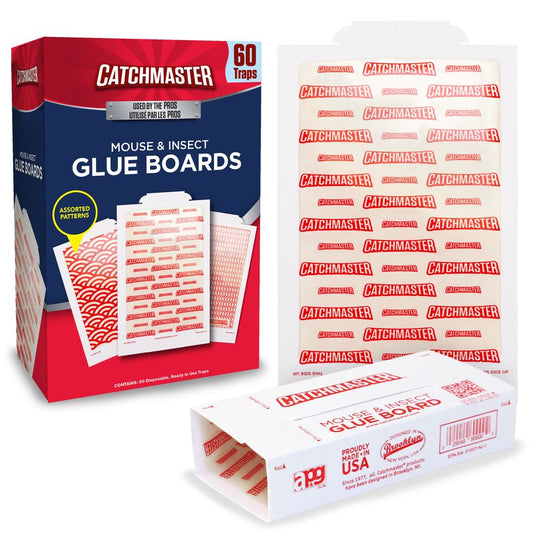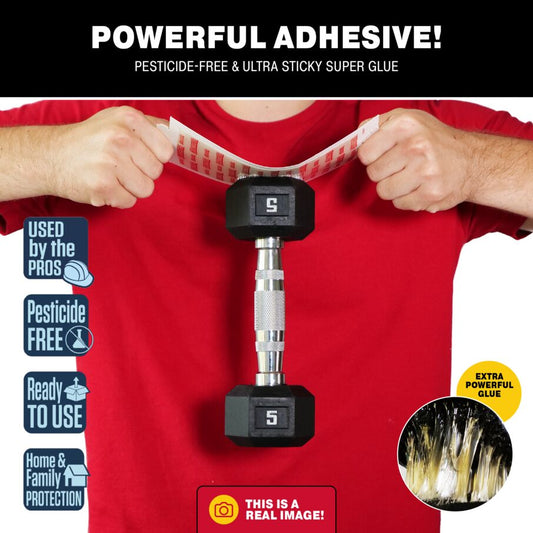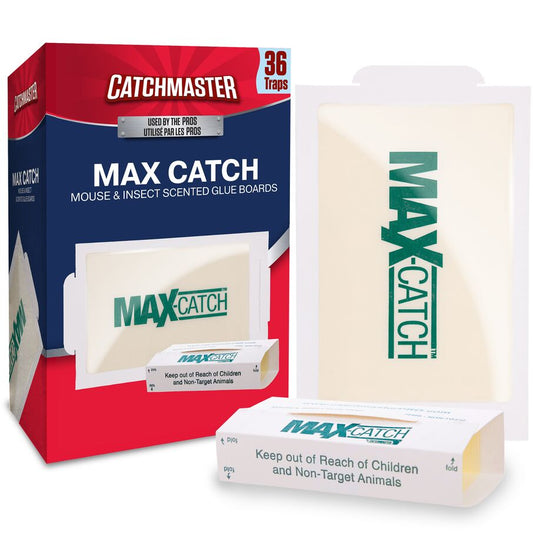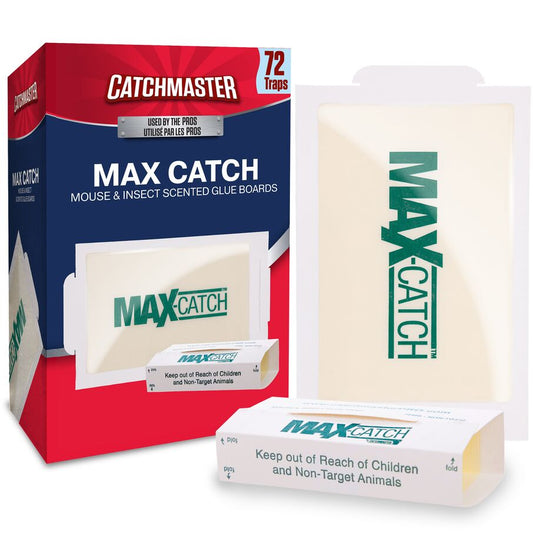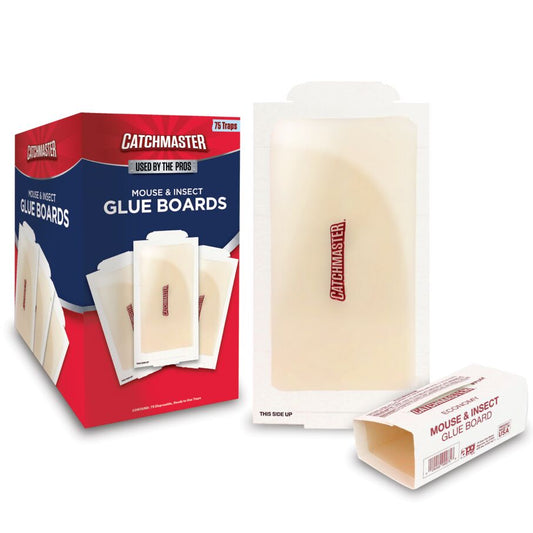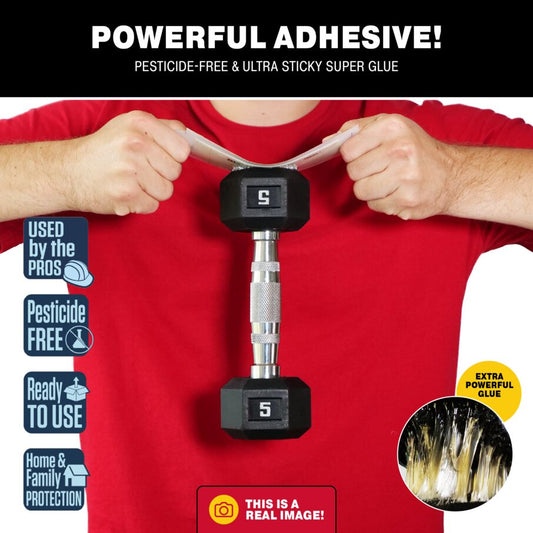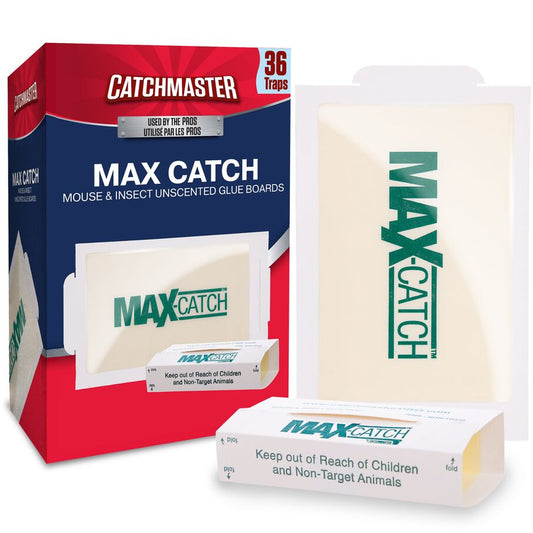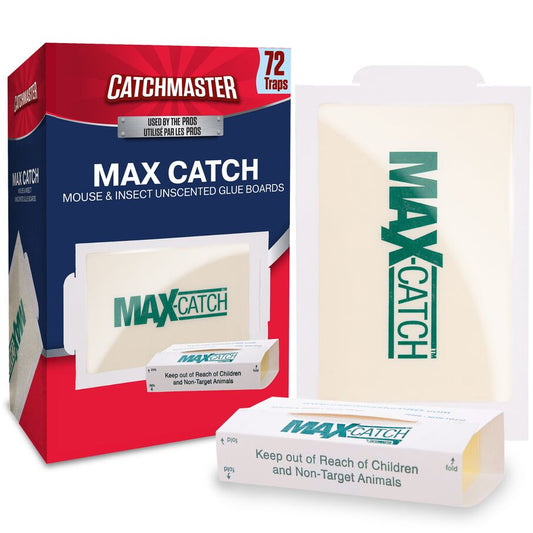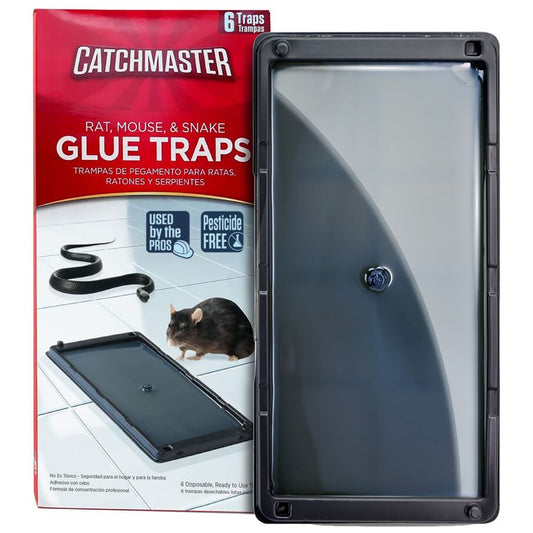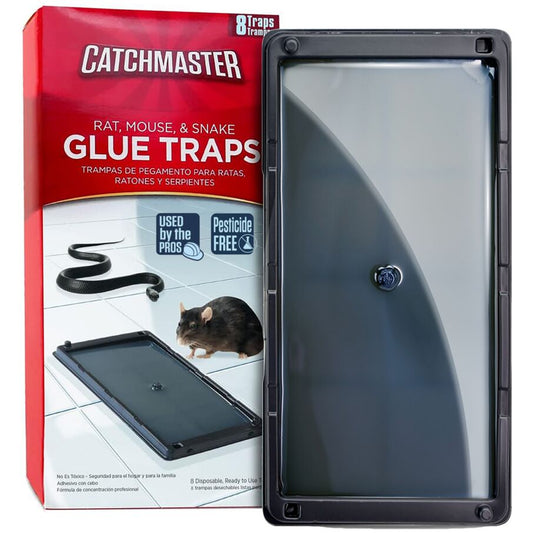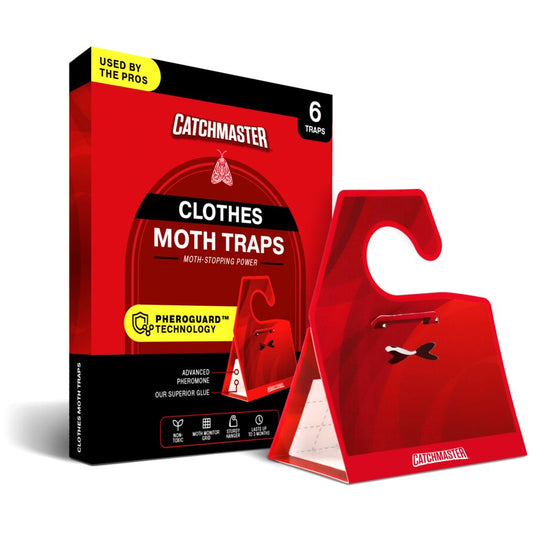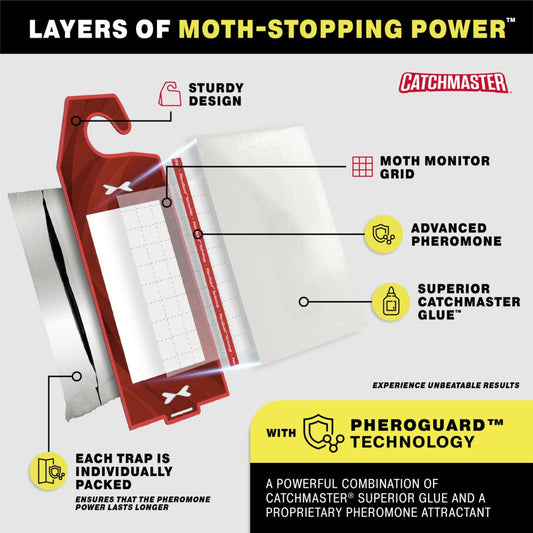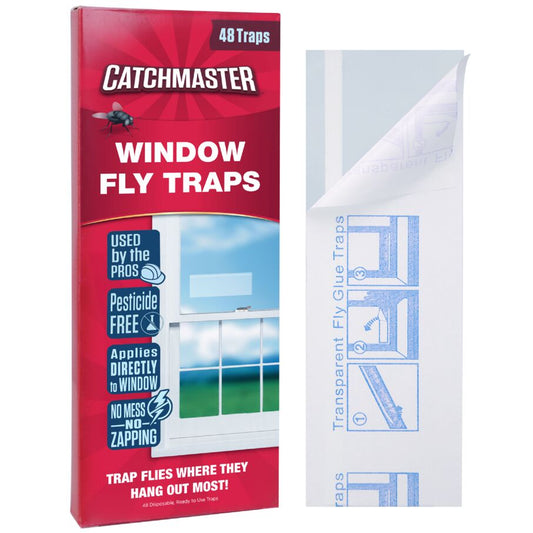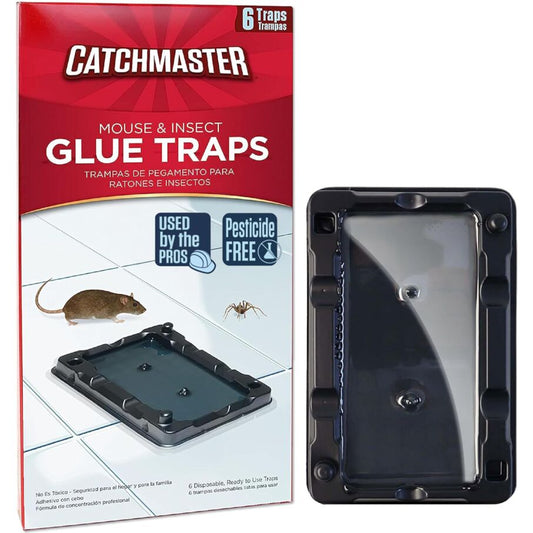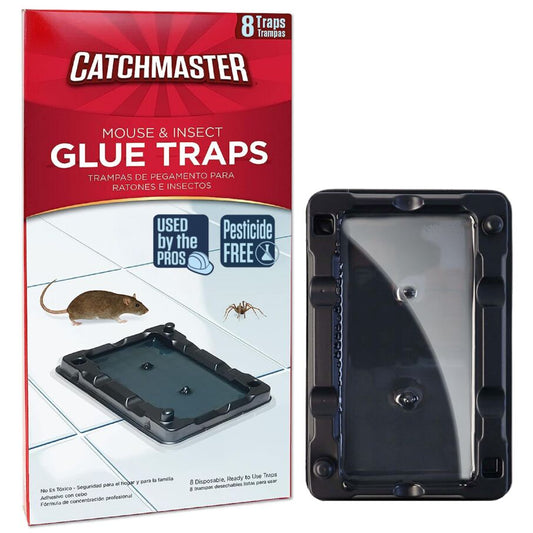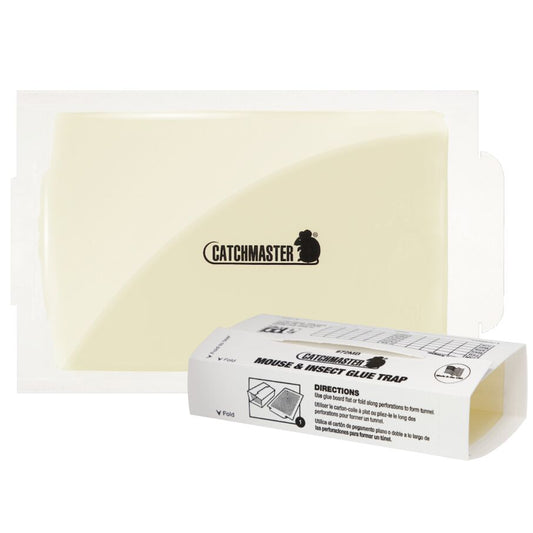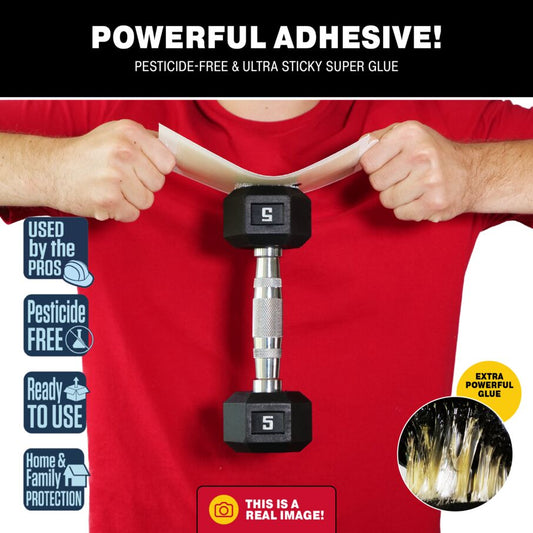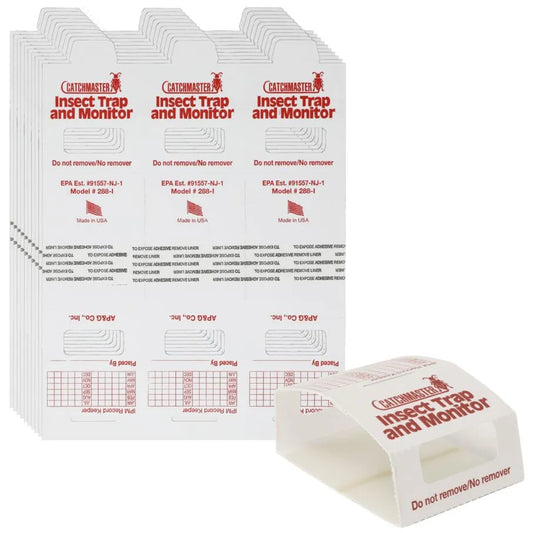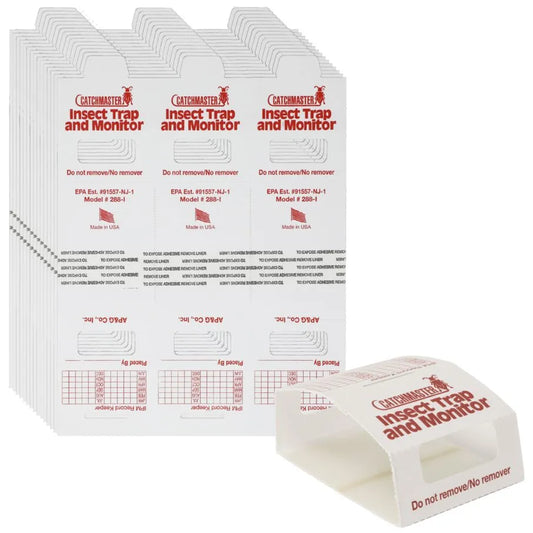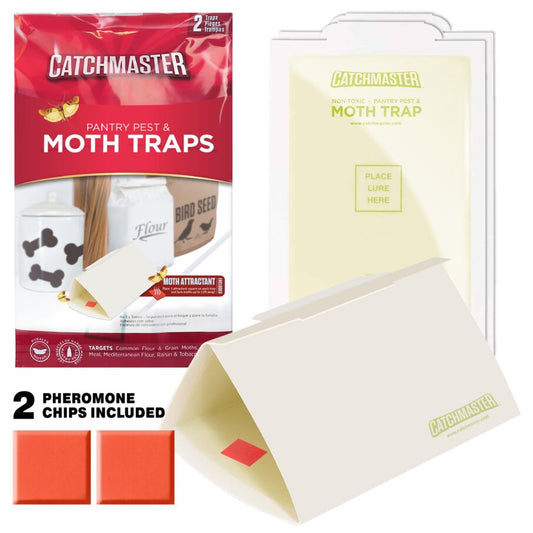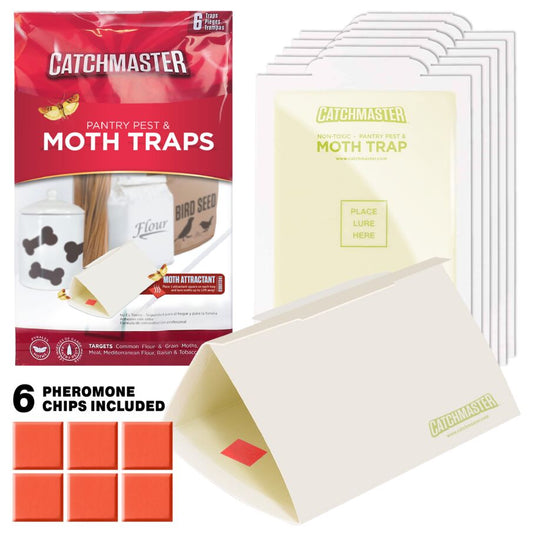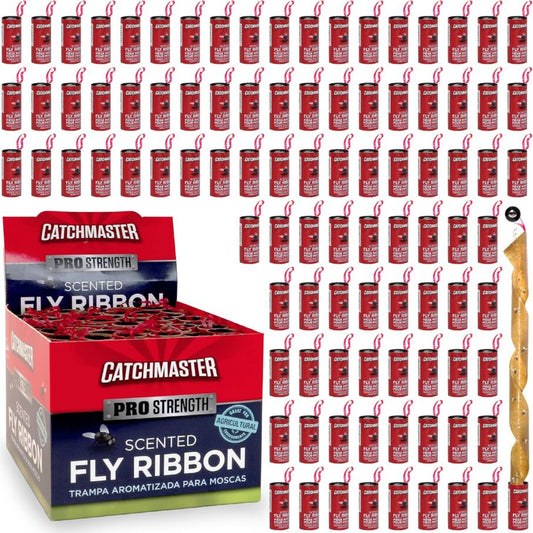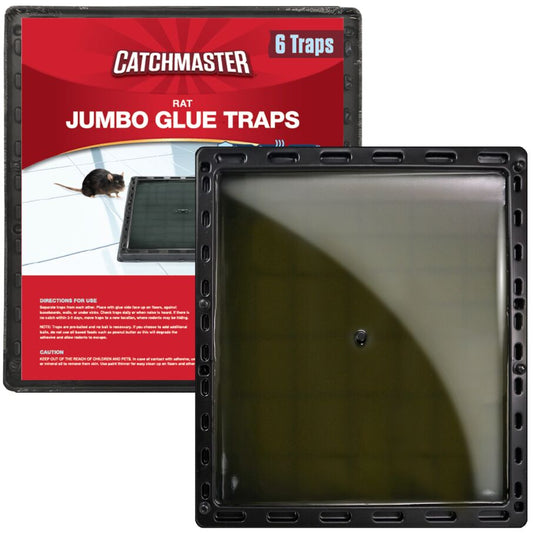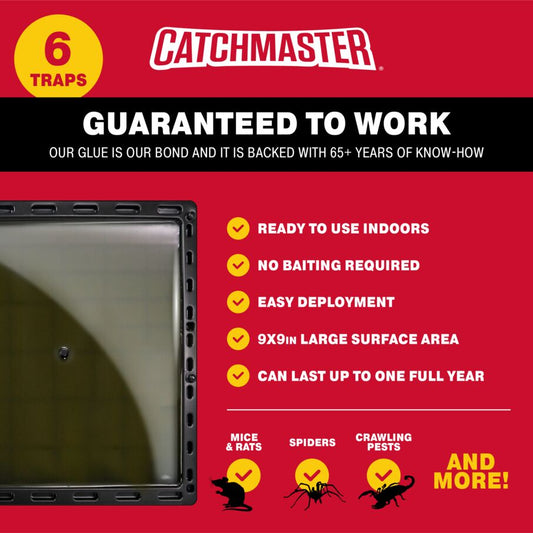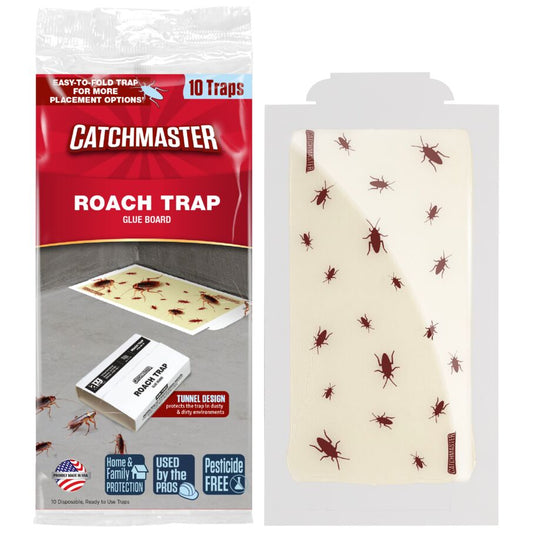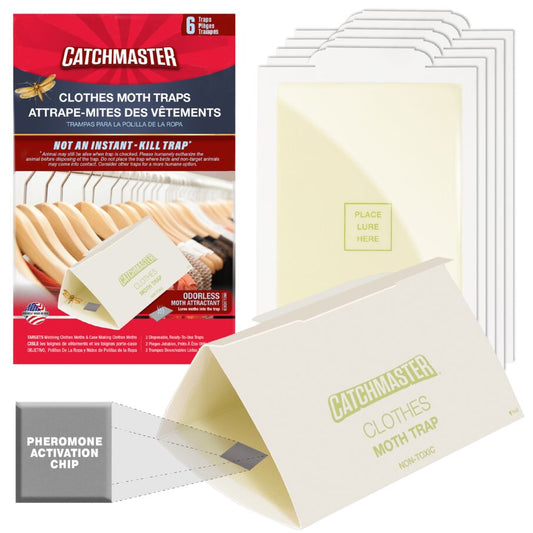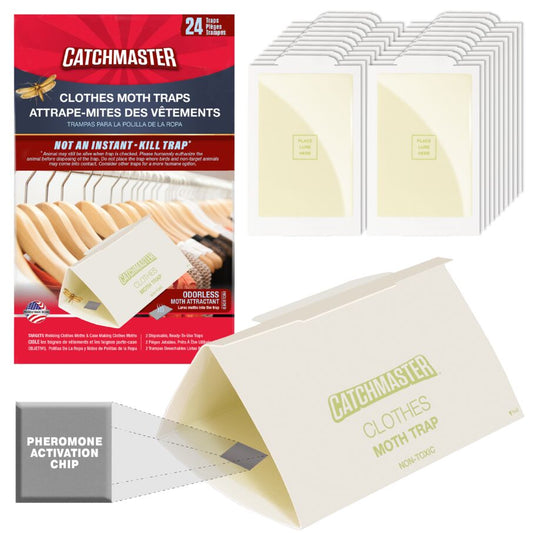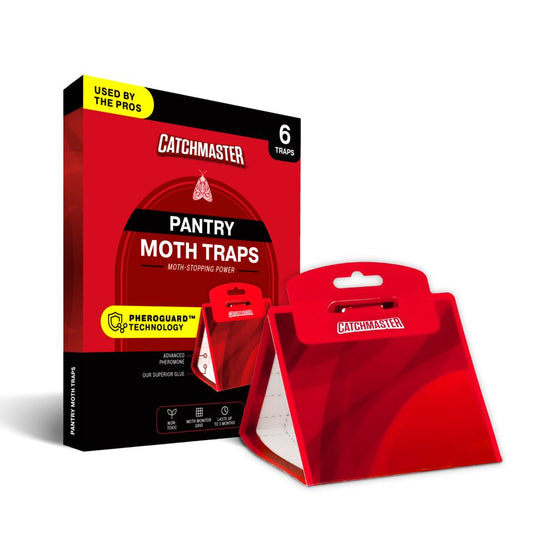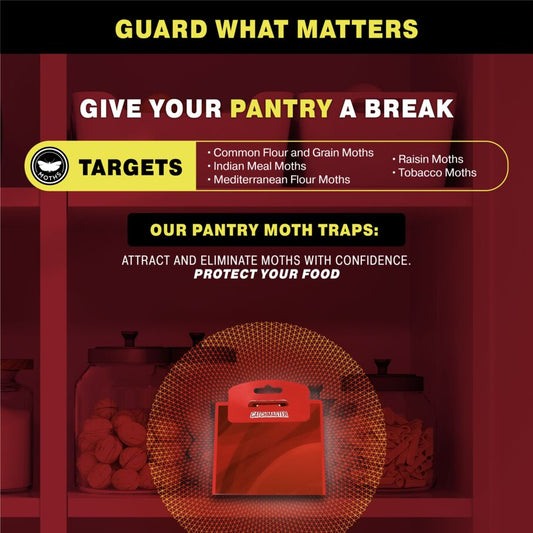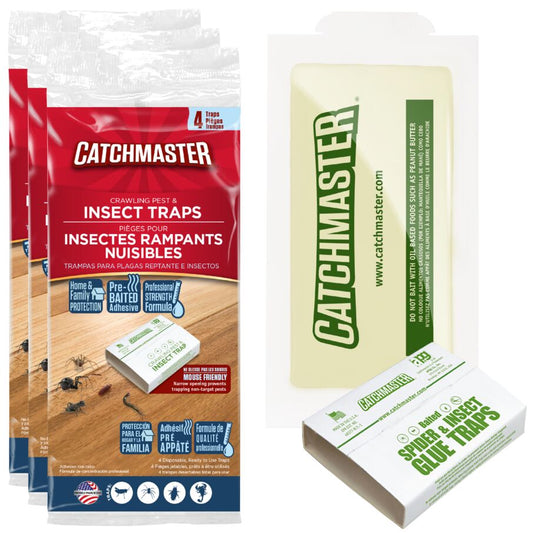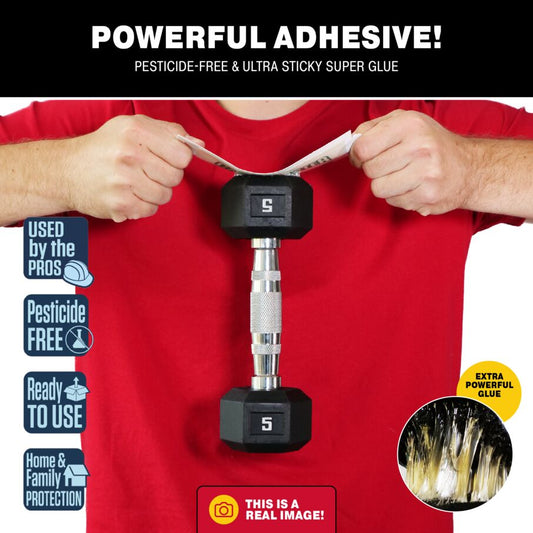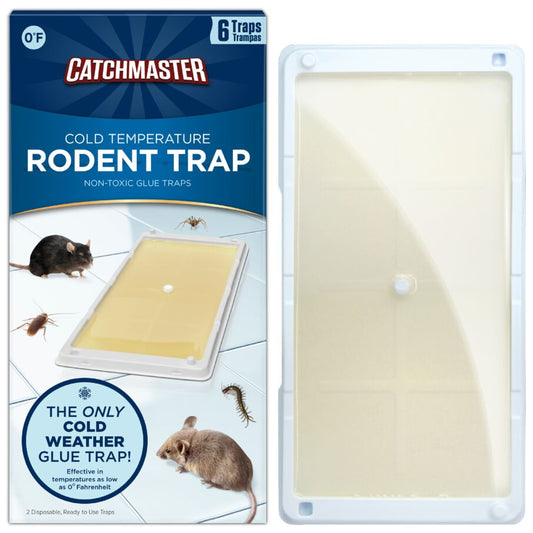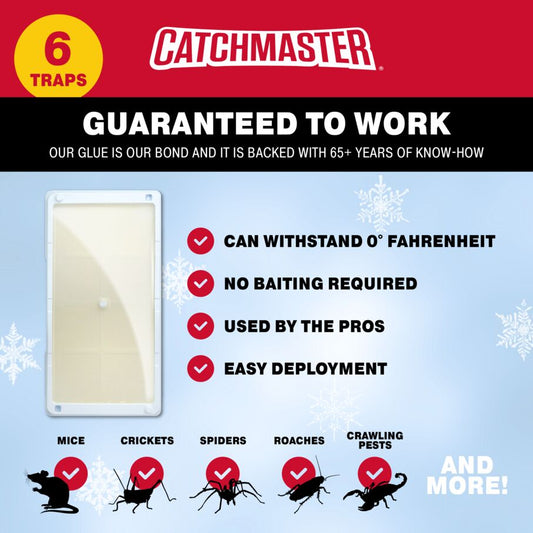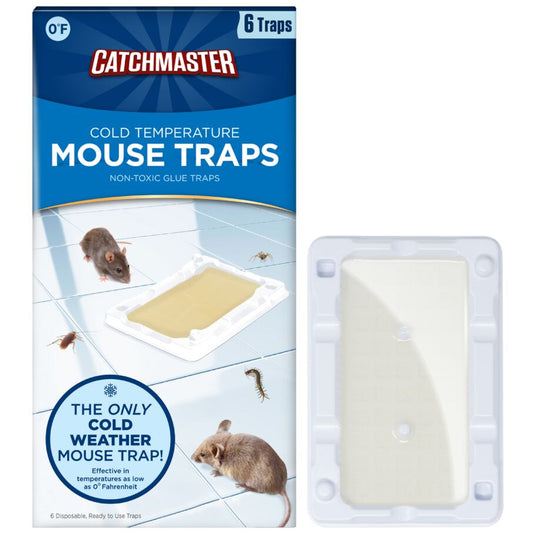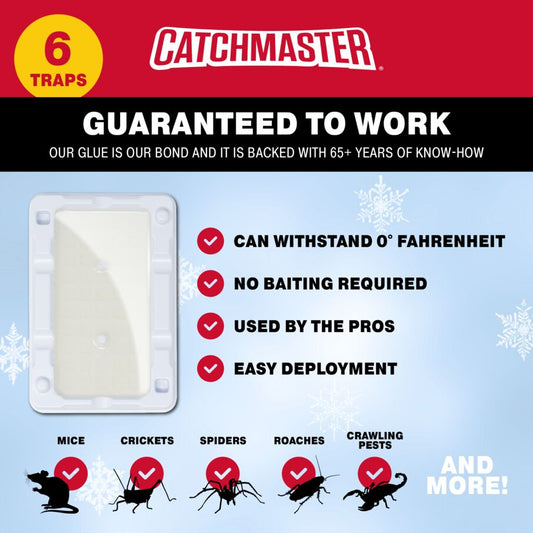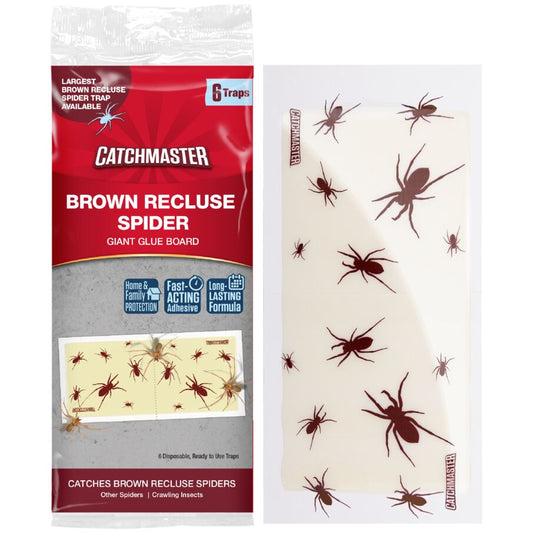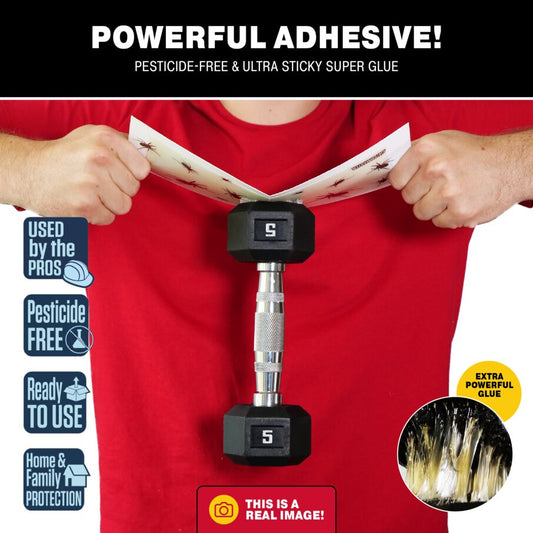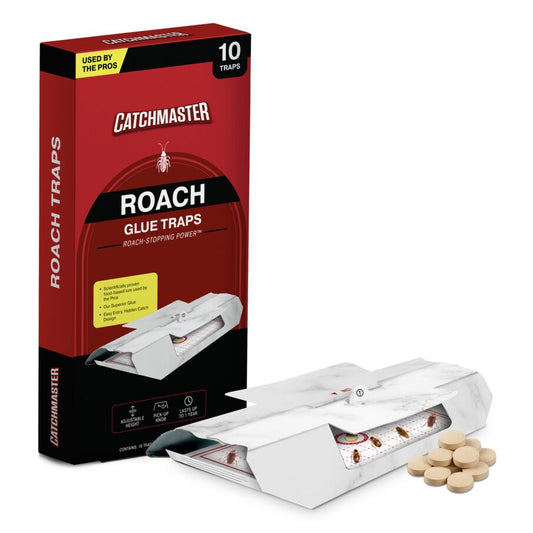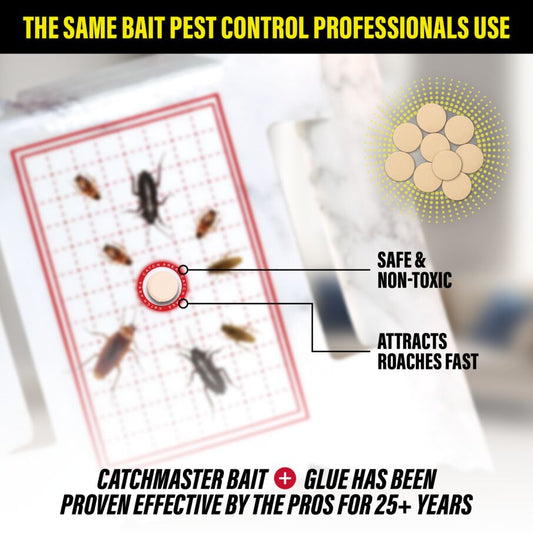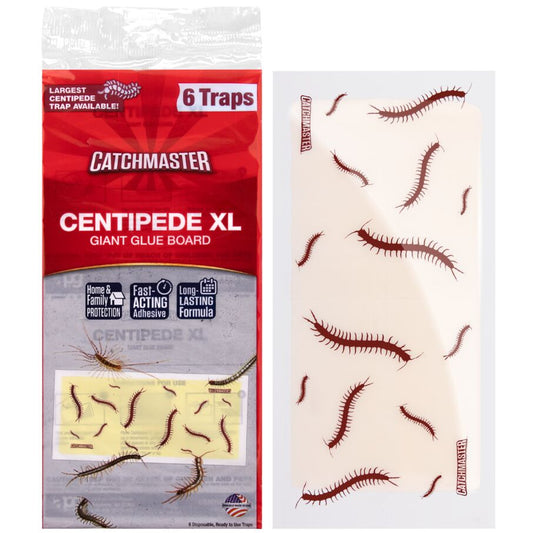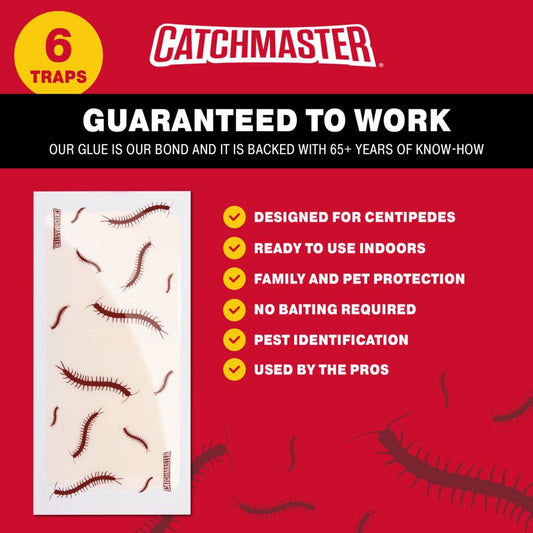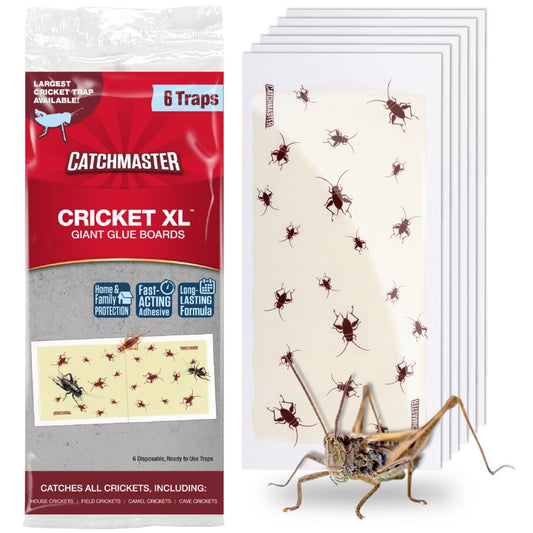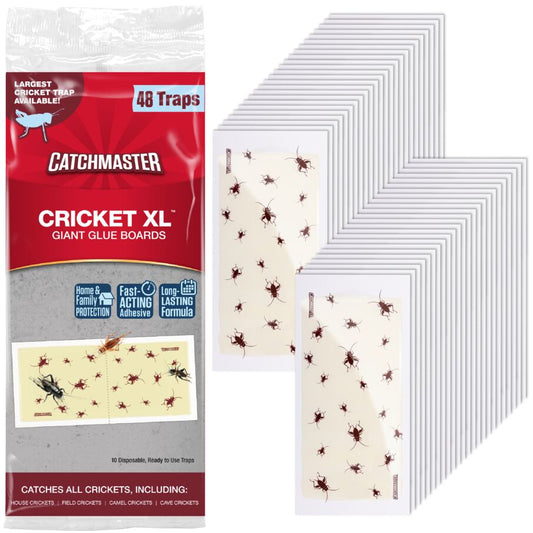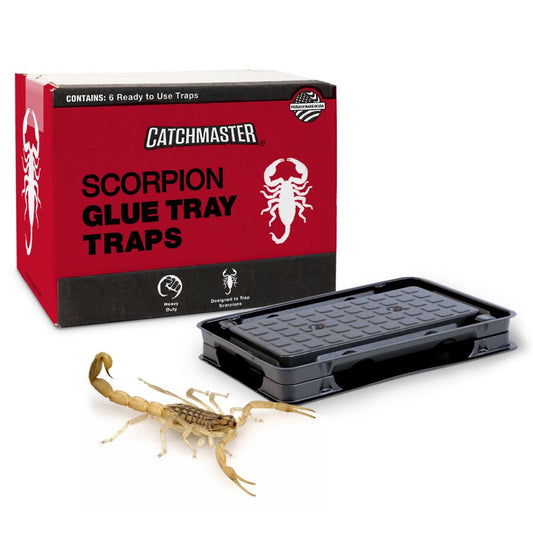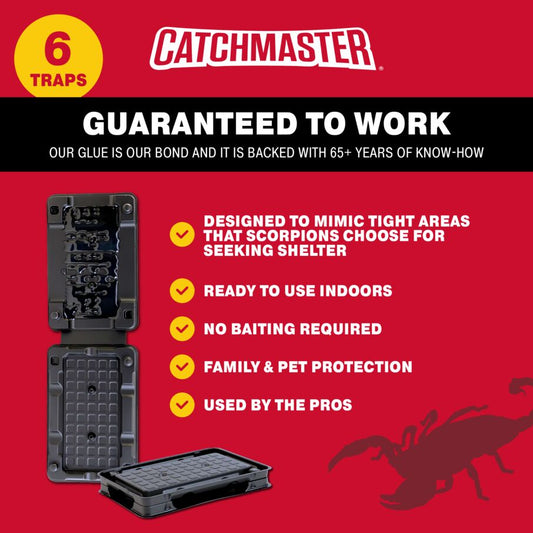Glue Traps for Pet and Family Friendly Pest Control
Find peace of mind and protection with Catchmaster®’s line of family friendly glue traps! Trusted by professionals for over 70 years, our pest control products are a cost-effective and efficient solution to all of your rodent, bug, and insect problems.
When you choose Catchmaster, you’re choosing a brand that integrates advanced technology with a strong commitment to public health. For safe, reliable, and pest-stopping power™, become a Catchmaster!
-
Pro Strength Mouse & Insect Glue Boards
$25.99($0.43/trap)5.0 / 5.0
(73) 73 total reviews
Regular price $25.99 USDRegular priceUnit price / per$25.99 USDSale price $25.99 USD -
Max-Catch Classic Glue Board Traps
$23.49 – $33.99($0.65 - $0.47/trap)4.9 / 5.0
(58) 58 total reviews
Regular price From $23.49 USDRegular priceUnit price / per$23.49 USDSale price From $23.49 USDQuick Add
Select Size

Max-Catch Classic Glue Board Traps
-
Mouse and Insect Glue Board Traps
$31.99($0.43/trap)5.0 / 5.0
(30) 30 total reviews
Regular price $31.99 USDRegular priceUnit price / per$31.99 USDSale price $31.99 USD -
Max-Catch Unscented Glue Board Traps
$23.49 – $33.99($0.65 - $0.47/trap)4.9 / 5.0
(23) 23 total reviews
Regular price From $23.49 USDRegular priceUnit price / per$23.49 USDSale price From $23.49 USDQuick Add
Select Size

Max-Catch Unscented Glue Board Traps
-
Rat, Mouse & Insect Glue Traps
$15.99 – $25.99($2.67 - $2.17/trap)4.9 / 5.0
(17) 17 total reviews
Regular price From $15.99 USDRegular priceUnit price / per$15.99 USDSale price From $15.99 USDQuick Add
Select Size

Rat, Mouse & Insect Glue Traps
-
Clothes Moth Traps with Pheromones
$19.49($3.25/trap)5.0 / 5.0
(1) 1 total reviews
Regular price $19.49 USDRegular priceUnit price / per$19.49 USDSale price $19.49 USD -
Bug & Fly Clear Window Traps
$10.99 – $39.99($0.92 - $0.42/trap)5.0 / 5.0
(17) 17 total reviews
Regular price From $10.99 USDRegular priceUnit price / per$10.99 USDSale price From $10.99 USDQuick Add
Select Size

Bug & Fly Clear Window Traps
-
Mouse & Insect Glue Traps
$8.99 – $34.99($1.5 - $0.87/trap)5.0 / 5.0
(10) 10 total reviews
Regular price From $8.99 USDRegular priceUnit price / per$8.99 USDSale price From $8.99 USDQuick Add
Select Size

Mouse & Insect Glue Traps
-
Mouse & Insect Super Glue Traps
$21.99($0.73/trap)5.0 / 5.0
(7) 7 total reviews
Regular price $21.99 USDRegular priceUnit price / per$21.99 USDSale price $21.99 USD -
Brown Recluse Spider Glue Board Traps
$15.99 – $19.99($0.53 - $0.44/trap)5.0 / 5.0
(5) 5 total reviews
Regular price From $15.99 USDRegular priceUnit price / per$15.99 USDSale price From $15.99 USDQuick Add
Select Size

Brown Recluse Spider Glue Board Traps
-
Pantry Pest & Moth Pheromone Infused Glue Board Traps
$9.99 – $48.49($5.0 - $2.02/trap)5.0 / 5.0
(5) 5 total reviews
Regular price From $9.99 USDRegular priceUnit price / per$9.99 USDSale price From $9.99 USDQuick Add
Select Size

Pantry Pest & Moth Pheromone Infused Glue Board Traps
-
Premium Fly & Bug Ribbon Traps
$12.99 – $43.49($0.65 - $0.45/trap)5.0 / 5.0
(2) 2 total reviews
Regular price From $12.99 USDRegular priceUnit price / per$12.99 USDSale price From $12.99 USDQuick Add
Select Size

Premium Fly & Bug Ribbon Traps
-
Jumbo Glue Traps for Large Rodents and Other Pests
$40.99($6.83/trap)5.0 / 5.0
(4) 4 total reviews
Regular price $40.99 USDRegular priceUnit price / per$40.99 USDSale price $40.99 USD -
Roach Trap Glue Board Traps
$10.49 – $13.49($1.75 - $1.35/trap)5.0 / 5.0
(7) 7 total reviews
Regular price From $10.49 USDRegular priceUnit price / per$10.49 USDSale price From $10.49 USDQuick Add
Select Size

Roach Trap Glue Board Traps
-
Clothes Moth Glue Board Traps
$12.99 – $34.99($2.17 - $1.46/trap)5.0 / 5.0
(2) 2 total reviews
Regular price From $12.99 USDRegular priceUnit price / per$12.99 USDSale price From $12.99 USDQuick Add
Select Size

Clothes Moth Glue Board Traps
Sold out -
Pantry Moth Traps With Pheromone Attractants
$16.49($2.75/trap)5.0 / 5.0
(3) 3 total reviews
Regular price $16.49 USDRegular priceUnit price / per$16.49 USDSale price $16.49 USD -
Crawling Pest, Spider & Insect Glue Board Traps
$10.49($0.87/trap)5.0 / 5.0
(3) 3 total reviews
Regular price $10.49 USDRegular priceUnit price / per$10.49 USDSale price $10.49 USD -
Rodent & Insect Glue Trays for Cold Weather
$25.99($4.33/trap)5.0 / 5.0
(2) 2 total reviews
Regular price $25.99 USDRegular priceUnit price / per$25.99 USDSale price $25.99 USD -
Mouse & Insect Glue Trays for Cold Weather
$11.99($2.0/trap)Regular price $11.99 USDRegular priceUnit price / per$11.99 USDSale price $11.99 USD -
Brown Recluse Spider Giant Glue Board Traps
$14.99($2.5/trap)Regular price $14.99 USDRegular priceUnit price / per$14.99 USDSale price $14.99 USD -
Catchmaster Cockroach Trap with Powerful Food-Based Bait – Glue Traps (10-Pk)
$19.99($2.0/trap)Regular price $19.99 USDRegular priceUnit price / per$19.99 USDSale price $19.99 USD -
Centipede XL Giant Glue Board Traps
$15.99($2.67/trap)Regular price $15.99 USDRegular priceUnit price / per$15.99 USDSale price $15.99 USD -
Cricket XL Giant Glue Board Traps
$13.99 – $71.99($2.33 - $1.5/trap)5.0 / 5.0
(4) 4 total reviews
Regular price From $13.99 USDRegular priceUnit price / per$13.99 USDSale price From $13.99 USDQuick Add
Select Size

Cricket XL Giant Glue Board Traps
-
Scorpion Glue Tray Traps
$14.99($2.5/trap)Regular price $14.99 USDRegular priceUnit price / per$14.99 USDSale price $14.99 USD
Effective Adhesive Traps for Your Pest Control Needs
When it comes to effective glue traps for pest control, only one brand stands the test of time: Catchmaster! Suitable for use in residential, commercial, and agricultural settings, our adhesive traps are strong, effective, and non-toxic.
Designed to work in any situation, our easy-to-use, non-toxic, sticky traps come in all sizes to capture every type of pest without harming your pets or family members. Made from high-quality materials and a specialized glue formula, nothing solves a pest control problem quite like Catchmaster!
Why Choose Catchmaster's Glue Boards for Pest Control?
Our user-friendly and low-profile design will help keep your home pest-free.
Not only are our glue traps crafted to blend seamlessly into your home environment, but that same innovative design ensures safety. Use them to help eliminate unwanted insects, rodents, and other pest problems from your home.
When you need the best in pest control management, you need the one company committed to customer convenience and simple solutions. Trust the solutions the professionals trust. Trust Catchmaster!
How Glue Traps Work: An Easy, Non-Toxic Solution for Pests
Our non-toxic traps utilize a unique adhesive formula that provides superior trapping power without being dangerous or toxic to pets or children.
We take pride in being a trusted choice for safe and reliable pest control. By choosing Catchmaster, you're opting for a brand that integrates advanced technology with a strong commitment to public health.
Protect Your Home with Our Premium Sticky Traps
If you are looking for a long-lasting, effective, and non-toxic solution to your insect or rodent problems, look no further than Catchmaster!
Our commitment to excellent customer service and satisfaction will ensure that you receive reliable and effective pest control solutions every time. Join the many satisfied customers who have achieved a pest-free home with Catchmaster's trusted products.
FAQs About Our Glue Traps
How Do Glue Traps Capture Pests?
Glue traps function by using a strong, specially formulated, non-toxic adhesive to immobilize pests and trap them until they can be disposed of. Once a pest steps onto the trap, it becomes stuck, allowing for easy identification and disposal. Each trap has been designed to be placed in strategic locations where pests are most active, such as along walls or near entry points.
Are Glue Traps Safe for Pets and Children?
Yes. Catchmaster takes great pride in creating eco-friendly and non-toxic pest control solutions that are safe to use around pets and children.
Where Should I Place Glue Traps for Maximum Effectiveness?
For optimal results, place your chosen traps in locations with noticeable pest activity. Common areas include along walls and near entry points such as doors and windows. It's also beneficial to place traps in areas where pests may be attracted, such as pantries or other locations where food is stored. Since glue traps are behavioral traps, it’s best to avoid placing them in corners. Instead, position them in areas where rodents are likely to pass by quickly, increasing the chances of a successful catch.
You can also place the traps in high-traffic areas, covering the glue with release paper for a few days. This will help the mice adjust to the traps and increase the likelihood that they will run into the glue as soon as the cover is removed.
How Often Should I Check and Replace Glue Traps?
We recommend checking Catchmaster glue traps at least once a week to monitor their effectiveness and determine if they need to be replaced. If you notice increased pest activity, you may need to check and replace the traps more frequently.
If a trap has caught pests or is covered in dust or debris, it should be replaced immediately to maintain its effectiveness. Regularly checking the traps ensures that you can quickly respond to any pest activity and keep your home protected.
Can Glue Traps Be Used Outdoors?
While glue traps are primarily designed for indoor use, they can be used outdoors in certain situations. However, outdoor conditions such as extreme temperatures, rain, and wind can affect the adhesive’s effectiveness and the overall performance of the trap.
If you choose to use glue traps outdoors, it's best to place them in sheltered areas, such as inside garages, sheds, or under covered porches, where they will be protected from the elements. For a more comprehensive pest control solution, consider pairing our glue traps with other outdoor pest control methods.

